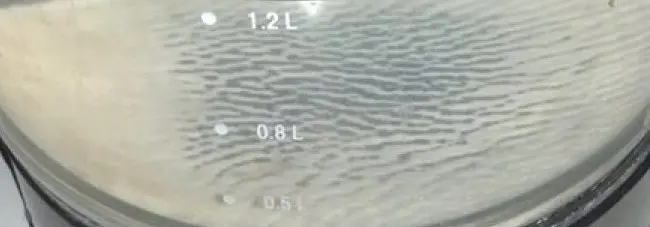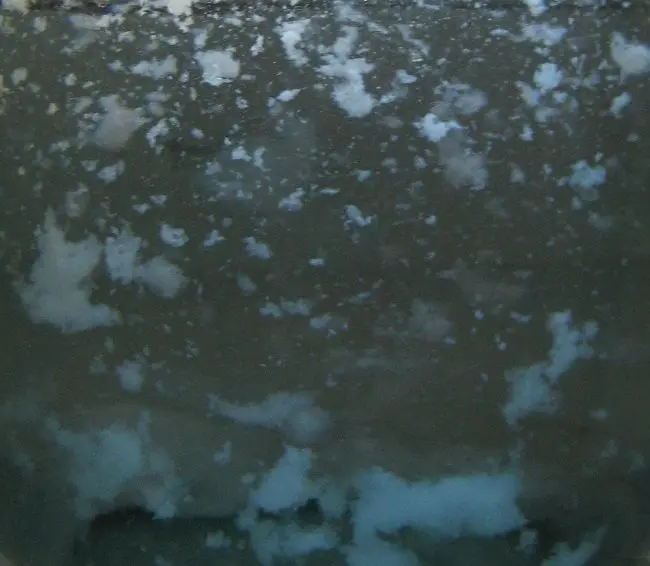Contents
Sometimes, after dilution or strong cooling, flakes or a white crystalline coating may appear even in initially transparent moonshine. There are several reasons for this phenomenon, which we will discuss further. In most cases, the situation can be corrected.
Reasons for white flakes in moonshine
1. Too hard water. Please note that the hardness of the water on which the mash was placed is not so critical, because “soft” distilled water enters the selection with alcohol.
It is very important to choose the right water for diluting the distillate. It should be with a minimum content of magnesium and calcium salts. Well suited bottled or spring, the worst option is tap water.
If white flakes appear in moonshine 2-3 weeks after dilution, then it is very likely that the cause is hard water. At the same time, cleaning with coal will only exacerbate the problem. Here you can try filtration through cotton wool or another distillation followed by dilution with already “soft” water.

2. Getting “tails” in the selection. When the fortress in the jet is below 40% vol. the risk of fusel oils getting into the distillate is significantly increased (in the case of a classic distiller). At the time of distillation, moonshine may remain transparent and not smell, and the problem is visible when the distillate is stored for more than 12 hours in the cold – at a temperature not higher than + 5-6 ° C.
Flakes in moonshine from fusel oils are not crystalline, but more “fluffy” and look like snow. They can be removed by re-distillation, removing moonshine from the sediment after a few weeks in the cold, as well as filtering through cotton wool, birch or coconut activated carbon. When filtering, it is important to remember that in this case, moonshine cannot be heated even to room temperature (fusel oils dissolve back in alcohol), and even better, cool to almost zero.

If the moonshine immediately after distillation is cloudy, then most likely the reason is the splash – the ingress of boiling mash into the steam line of the apparatus. This problem is solved by reducing the heating power of the distillation cube, and cloudy moonshine can be cleaned, but not always effective, so it’s best to re-distill.
3. Incorrect moonshine still materials. Upon contact with aluminum and brass, not only a white precipitate may form, but also other colors: brown, black, red, etc. Sometimes the appearance of white flakes in moonshine provokes copper upon contact with condensed alcohol vapor.
If the cause of the sediment is aluminum (distillation cubes from milk cans) or brass (water pipes as steam pipes), then these parts of the moonshine still should be replaced with stainless steel analogues, and the resulting moonshine should be used only for technical needs. You can clean the copper moonshine still in several ways, and distillate with sediment can be distilled again.
4. Storing hard liquor in plastic. Alcohol with a strength above 18% vol. Guaranteed to corrode all plastic, which is not intended for the storage of alcoholic beverages. Therefore, it is impossible to store moonshine in plastic bottles even for a couple of days. At first, such a drink will become cloudy, then a white precipitate will appear. It is strictly forbidden to drink distillate from plastic bottles, it will not work to fix it either.
Prevention of turbidity and the appearance of sediment in moonshine
- Use water of suitable hardness for setting the mash and diluting the distillate.
- Before distillation, clarify and drain the mash from the sediment.
- Distill the mash in a well-washed apparatus made of the right materials (stainless steel or copper).
- Do not fill distillation cubes more than 80% of the volume, avoiding boiling mash in the steam line of the moonshine still.
- Correctly cut off the “heads” and “tails”.
- Refuse plastic containers for storing alcohol stronger than 18% vol.









